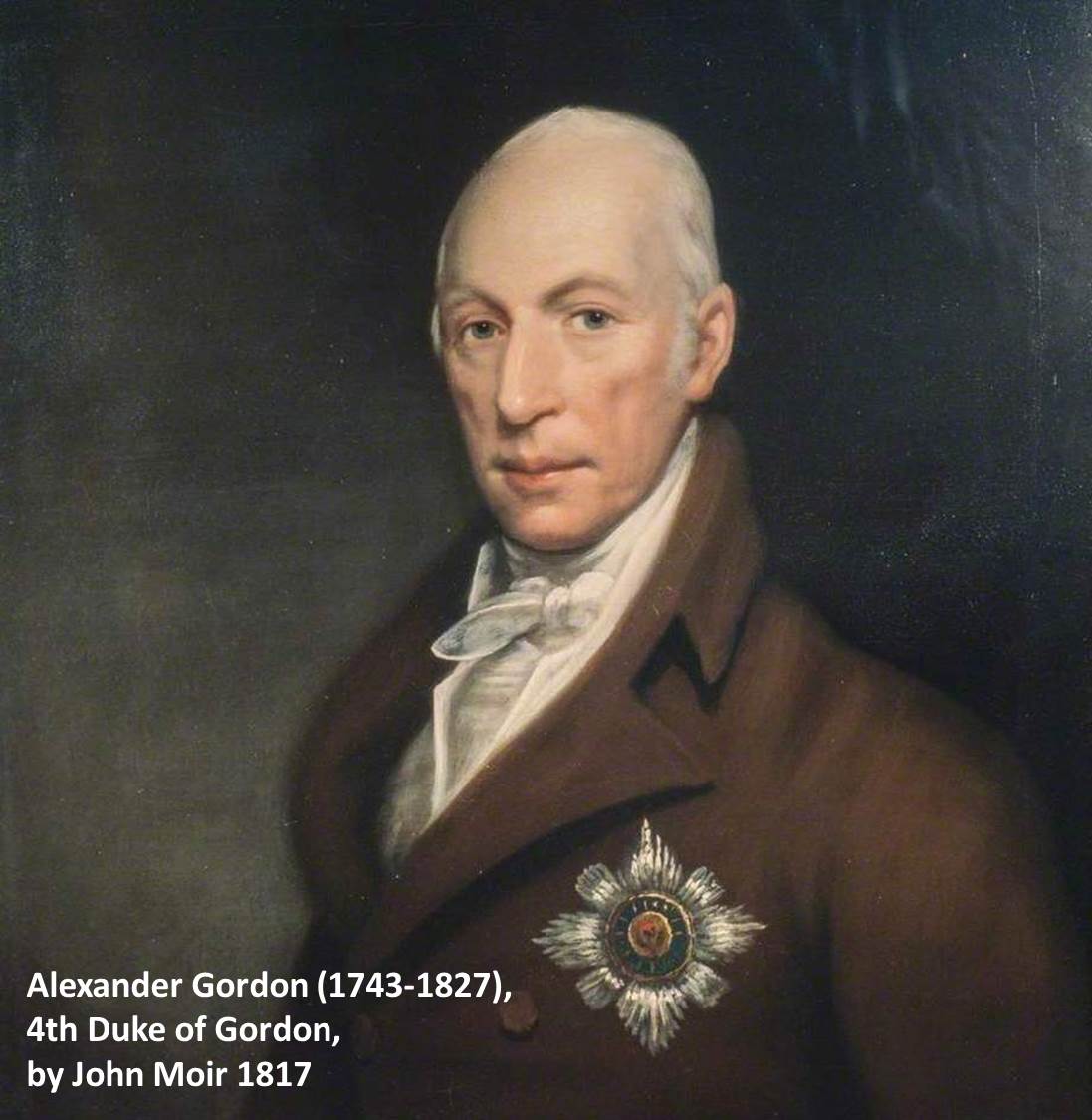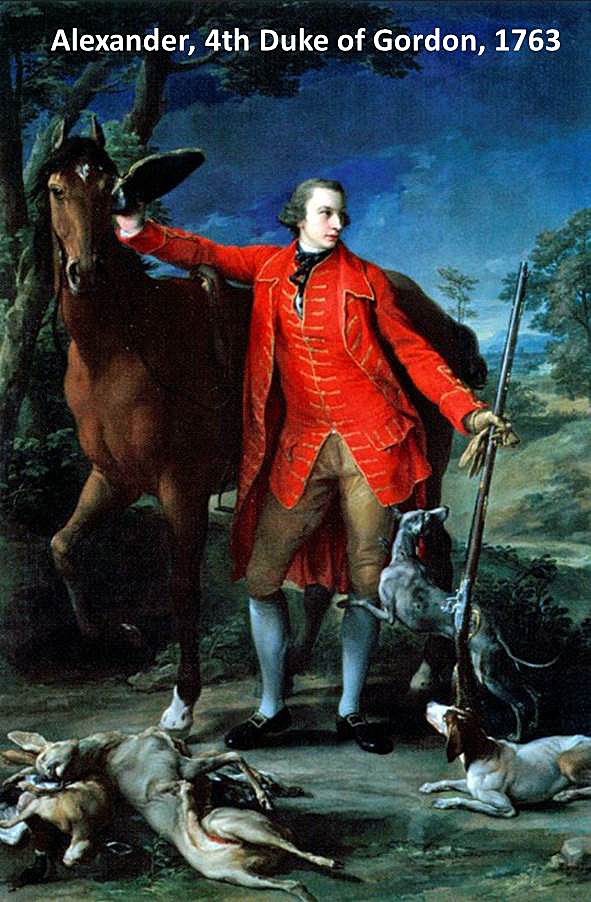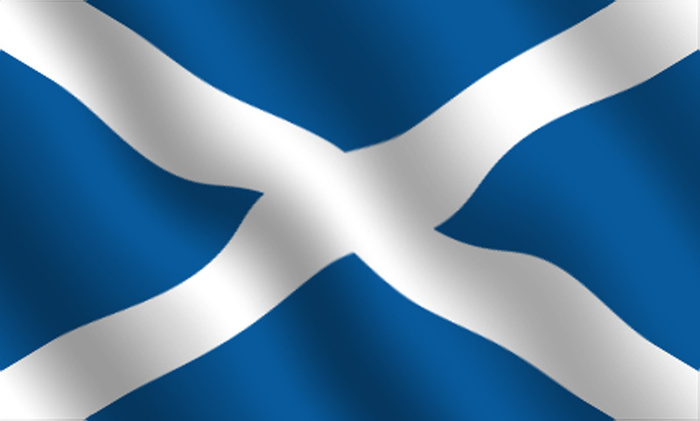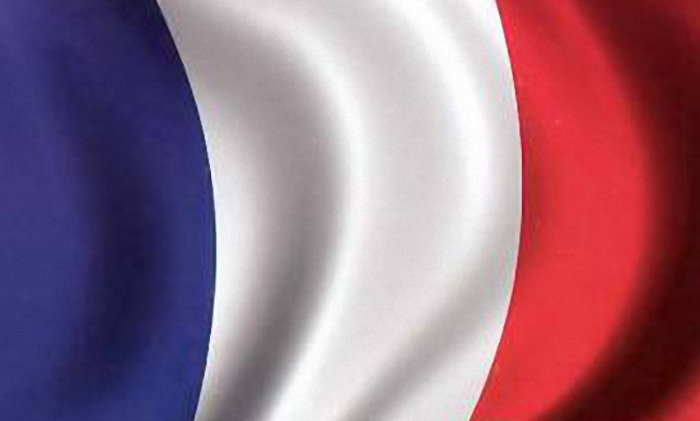Cock o’the North is a 6/8 military march, bagpipes tune and jig. The original version is evidently English. The earliest mention of a piece of music called "Joan's Placket is Torn" was in Samuel Pepys’ diary for June, 1667. It was also known at the same period as "Jumping John/Joan". At least, it has been persistently rumored (without any verification) that a trumpet version of the tune was played at the execution of Mary Queen of Scots in 1587.
In England, Andrew Bullen suggests there is some evidence to think that "Cock of the North" was the tune traditionally used in the famous horn dance of Abbots Bromley, Staffordshire (currently performed in most Christmas Revels pageants). In Newfoundland “Cock o’ the North” was known by the title “Auntie Mary,” by which it is known in Ireland.
|
The Marquis of Huntly is chief of the Gordon clan. The name Gordon comes from the village and parish of the same name in Berwickshire,
and is derived from the Brythonic words “gor” meaning spacious and “din” fort. Since the early 15th century, the Marquis has lived in Aboyne castle, selected for its strategic position near the River Dee and controlling the northern end of one of the Mounth crossings. The Gordons, major landowners rather than a traditional tribal clan, were famed for their championship of catholicism and their mastery of horse-breeding. The Gordons grew without great challenge. At the height of their power, the Gordons ruled virtually an independant kingdom in the north east of Scotland (Aberdeenshire & Banffshire). As tribute to the clan’s immense power and influence, their near-regal chief was invariably known as "The Cock of the North". This nickname, still proudly used, personifies the cock’s pride and bravery (its proud and boastful noisy cry and its bravery in battles to the death). |

|

|
The first to inherit title comes from the nickname of “Cock o'the North” was Alexander Gordon, 4th Duke of Gordon. He’s famous to have, with his wife help (his celebrated beautiful Duchess, Jean Maxwell,) raised in 1794 the 92nd Regiment of Foot, which later became the Gordon Highlanders. Nevertheless, they did not enjoy a happy marriage, eventually separating in 1793. Whereas his wife was interested in the cosmopolitan world of politics, the Duke preferred rural pursuits such as hunting on his Aberdeenshire estates and breeding deerhounds and setters. |

|

|
In 1793, the French Revolutionary Government declared war on Great Britain. At that time the British army was short of recruits, since the military service was not very popular among the young men. As a consequence the Government asked Jane’s husband, the Duke of Gordon, to raise another regiment. The outcome of this was a bet between Jane and the Prince Regent, the future King George IV. Jane bet with the Prince Regent that she could raise more men than he, meaning the Government. Although 45 by then, she was still extremely attractive. Her recruiting technique was, to say the least, unusual. She wore a military uniform and a large black feathered hat (highland bonnet), touring Scotland to organise reels. Anyone who joined the reel joined the army and received the King’s shilling, the recruiting payment, from between the Duchess’ lips by kissing her. This was how the Gordon Highlanders were founded. Her total was 940 men. On 24 June 1794, the newly embodied regiment paraded for the first time at Aberdeen. The illustration shows her in uniform distributing coloured ribbons for new recruits to wear on their hats. |
|
Le tartan des Gordon Highlanders
The Gordon tartan is the regimental tartan of the famous Gordon Highlanders and was selected by the Alexander, the 4th Duke from a choice of three submitted by William Forsyth, a weaver and outfitter from the town of Huntly. Forsyth wrote on 15th April 1793 'When I had the honour of communing with His Grace the Duke of Gordon, he was desirous to have patterns of the 42nd Regiment plaid with a small yellow stripe properly placed. I imagine the yellow stripes will appear very lively.' A Gordon website claims that the Duke offered the other two Forsyth samples to Gordon Branch or Cadet Families. The Gordons of Hallhead and Esslemont selected the tartan with three yellow lines and the Gordon-Cumming of Altyre and Gordonstoun chose the tartan with two yellow lines. |

|
The tune has always been a march used by the Gordon Highlanders, although it did not become the official regimental march until 1933, when it replaced Hielan' Laddie.
At the siege of Lucknow during the Indian Mutiny of 1857, the British were initially hard pressed and were for some time besieged in various locations in the city by native Indians. Signals had been regularly sent between the forces defending parts of the besieged town, and those under attack in the Residency quarters. A drummer boy named Ross, after the signaling was over, climbed to the the fleche spire of the Shah Najaf Mosque and played "Cock o' the North" on his clarion bugle, rallying the English with his bravery while under heavy fire from the rebel forces.
In 1897, during an attack by the Gordon Highlanders on the Dargai Heights, which were held by Afridi tribesmen during the Tirah campaign, Piper George Findlater won the Victoria Cross for continuing to play a regimental march while wounded in both feet. The official statement did not give the name of the tune he played; some accounts state that it was "Haughs of Cromdale" which was the Regimental Charge-tune, others claim it was "Cock of the North". Finlater’s own account says that he did not hear an order to play "Cock of the North", and played "Cromdale" on his own initiative.
Besides the Gordons, the tune is, or has been, an official march for the following units:
- 48th Highlanders of Canada
- 85th Nova Scotia Highlanders
- King’s Own Scottish Borderers
- Royal Canadian Regiment.
They nearly all share the same first two lines. One of the milder versions runs:

Chorus
Auntie Mary had a canary
When I followed a lass. |

Chorus
Tatie Marie avait un canari
Je suivais une fille des Highland. |
|
Basel Tattoo
|
Gordons' retro
|
|
John McColl 1899
|

